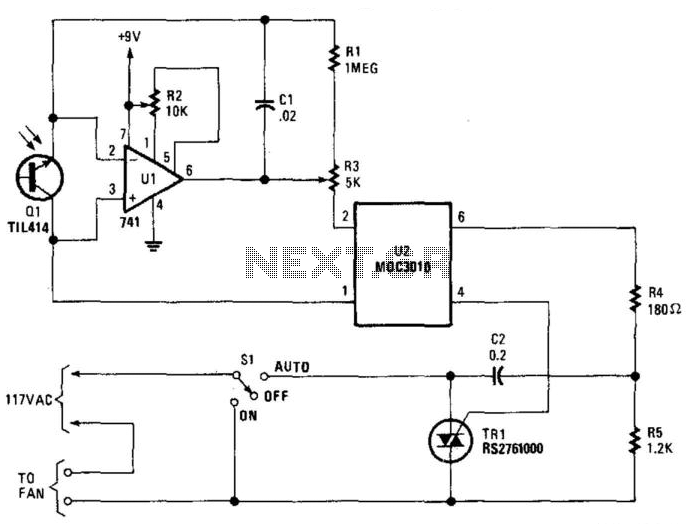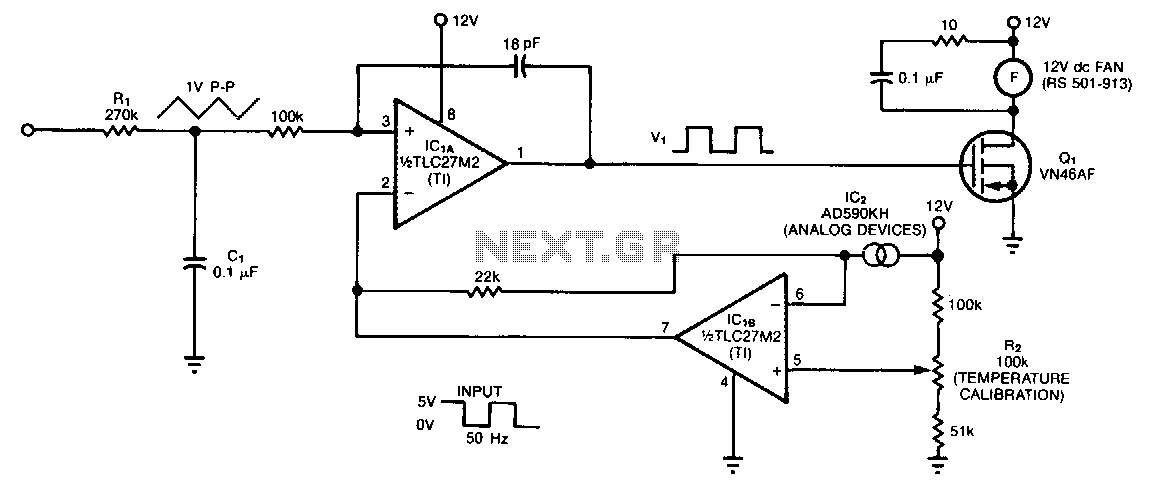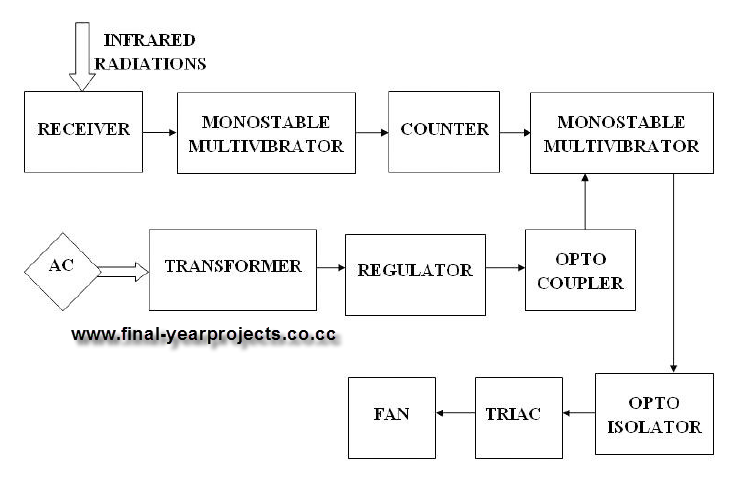
Ir Heat-Controlled Kitchen Fan

Q1 senses infrared radiation from heat sources, which causes U1 to switch on, activating optocoupler U1 and triggering TRIAC TR1. This controls a fan. The TRIAC can be sourced from Radio Shack or a 200-V, 6-A unit (C106B) can be used.
The circuit operates by utilizing an infrared (IR) sensor, designated as Q1, which detects the presence of heat sources. Upon detecting IR radiation, Q1 generates an output signal that activates the control circuit. The component U1 serves as a switching device, which, when energized by Q1, allows current to flow to the optocoupler U1. The optocoupler is critical for isolating the control side of the circuit from the high-voltage side, ensuring safety and preventing damage to sensitive components.
Once the optocoupler is activated, it sends a signal to TRIAC TR1. The TRIAC functions as a switch that can control the power delivered to the fan. When TR1 is triggered, it allows current to flow through the fan, activating it and providing cooling as needed. The choice of TRIAC is essential; a suitable component, such as a 200-V, 6-A TRIAC (C106B) or similar from Radio Shack, is recommended for this application to ensure it can handle the power requirements of the fan.
This circuit design is efficient for applications where automated cooling is required in response to heat detection, such as in HVAC systems or electronic device cooling solutions. The use of an optocoupler not only provides isolation but also enhances the reliability of the system by protecting the low-voltage control circuitry from high-voltage spikes that may occur when the TRIAC is activated. Overall, this combination of components creates a robust solution for controlling fan operation based on thermal input. Ql senses IR from heat sources, causes U1 to switch, activates optocopuler Ul, and triggers TR1. This contro ls a fan. The Triac is from Radio Shack, or else a 200-V, 6-A unit (C106B) can be used.
The circuit operates by utilizing an infrared (IR) sensor, designated as Q1, which detects the presence of heat sources. Upon detecting IR radiation, Q1 generates an output signal that activates the control circuit. The component U1 serves as a switching device, which, when energized by Q1, allows current to flow to the optocoupler U1. The optocoupler is critical for isolating the control side of the circuit from the high-voltage side, ensuring safety and preventing damage to sensitive components.
Once the optocoupler is activated, it sends a signal to TRIAC TR1. The TRIAC functions as a switch that can control the power delivered to the fan. When TR1 is triggered, it allows current to flow through the fan, activating it and providing cooling as needed. The choice of TRIAC is essential; a suitable component, such as a 200-V, 6-A TRIAC (C106B) or similar from Radio Shack, is recommended for this application to ensure it can handle the power requirements of the fan.
This circuit design is efficient for applications where automated cooling is required in response to heat detection, such as in HVAC systems or electronic device cooling solutions. The use of an optocoupler not only provides isolation but also enhances the reliability of the system by protecting the low-voltage control circuitry from high-voltage spikes that may occur when the TRIAC is activated. Overall, this combination of components creates a robust solution for controlling fan operation based on thermal input. Ql senses IR from heat sources, causes U1 to switch, activates optocopuler Ul, and triggers TR1. This contro ls a fan. The Triac is from Radio Shack, or else a 200-V, 6-A unit (C106B) can be used.





